Role of Carbon Sequestration Credits in Promoting Sustainable Forest Practices
- August 26, 2024
- 0 comment
The escalating impacts of climate change have underscored the urgent need for effective mitigation strategies. Among the various approaches, carbon sequestration has emerged as a critical tool in reducing atmospheric carbon dioxide levels. Carbon sequestration involves capturing and storing carbon, preventing it from contributing to the greenhouse effect. Forests, with their ability to absorb carbon dioxide through photosynthesis, play a pivotal role in this process.
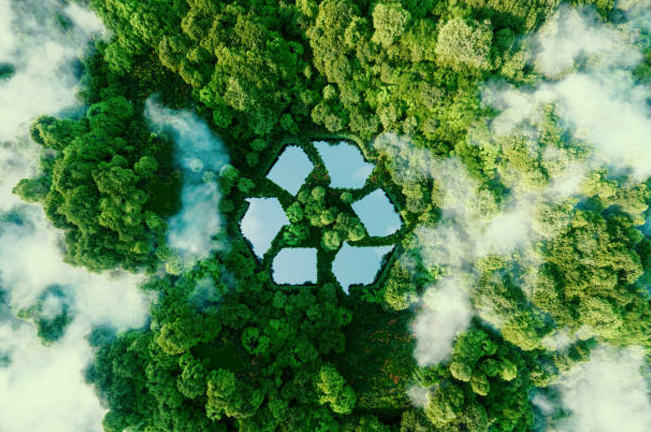
To harness the benefits of carbon sequestration, the concept of carbon credits was introduced. Carbon credits represent a quantified amount of carbon dioxide that has been prevented from entering the atmosphere. These credits can be traded in carbon markets, allowing industries to offset their emissions by investing in projects that sequester carbon. By linking economic incentives to environmental conservation, carbon credits aim to reduce global greenhouse gas emissions while promoting sustainable practices.
Table of Content
- The Science Behind Carbon Sequestration in Forests
- Understanding Carbon Sequestration Credits
- The Economic and Environmental Benefits of Carbon Sequestration Credits
- Challenges in Implementing Carbon Sequestration Credits
- The Role of Policy and Legislation
- Future Prospects of Carbon Sequestration Credits in Forestry
- FAQs
The Science Behind Carbon Sequestration in Forests

Forests act as natural carbon sinks, capturing carbon dioxide from the atmosphere and storing it in trees, soil, and other biomass. This process, known as carbon sequestration, is vital for mitigating climate change. Trees absorb carbon dioxide during photosynthesis, converting it into organic matter and storing it as biomass. The carbon remains stored as long as the forest is preserved, making it a long-term solution for carbon reduction.
Different forest management practices contribute to carbon sequestration in varying degrees. Afforestation, the process of planting new forests on previously non-forested land, and reforestation, the replanting of trees in deforested areas, both increase the amount of carbon captured by expanding forest cover. Avoided deforestation, on the other hand, focuses on preserving existing forests, preventing the release of stored carbon through activities like logging or land conversion. Each of these practices plays a significant role in enhancing carbon storage and contributing to climate change mitigation.
Understanding Carbon Sequestration Credits

Carbon sequestration credits are a key mechanism for monetizing the environmental benefits of carbon sequestration. Each credit represents one metric ton of carbon dioxide that has been captured and stored or avoided through conservation efforts. These credits can be sold or traded in carbon markets, providing a financial incentive for landowners and businesses to invest in sustainable forestry practices.
The process of certifying and trading carbon credits involves rigorous verification to ensure that the carbon sequestration is genuine and permanent. Various standards and protocols exist to certify carbon credits, such as the Verified Carbon Standard (VCS) and the Gold Standard. Once certified, these credits can be traded in voluntary or compliance markets, with buyers ranging from corporations seeking to offset their emissions to governments working towards climate targets.
Key stakeholders in the carbon credit market include governments, non-governmental organizations (NGOs), private companies, and forest managers. Governments often set the regulatory frameworks for carbon markets, while NGOs play a crucial role in promoting sustainable practices and ensuring the integrity of carbon credits. Private companies, particularly those in high-emission industries, are major buyers of carbon credits, using them to meet regulatory requirements or corporate sustainability goals.
The Economic and Environmental Benefits of Carbon Sequestration Credits

Carbon sequestration credits offer significant economic and environmental benefits. Financially, they provide a revenue stream for forest owners and managers who engage in sustainable practices. By monetizing the carbon stored in their forests, landowners can generate income while contributing to climate change mitigation. This economic incentive encourages the preservation and expansion of forests, supporting long-term environmental sustainability.
Environmentally, carbon credits help promote sustainable forest management and conservation. By attaching a tangible value to carbon sequestration, these credits encourage practices that enhance forest health and biodiversity. For example, reforestation projects not only sequester carbon but also restore ecosystems, improve soil quality, and support wildlife habitats.
Challenges in Implementing Carbon Sequestration Credits
Despite their potential, carbon sequestration credits face several challenges. Verification issues, market volatility, and regulatory uncertainty can hinder the effectiveness of carbon credit schemes. Ensuring that carbon sequestration is permanent and additional (i.e., that it wouldn’t have occurred without the credit) requires robust monitoring and verification, which can be costly and complex.
Ethical considerations also arise, particularly regarding the potential for greenwashing—where companies or projects falsely claim environmental benefits to appear more sustainable. Additionally, there are concerns about the social impacts of carbon credit projects on local communities, especially in cases where land is appropriated for conservation without proper consultation or compensation.
The potential impact on indigenous rights is another significant challenge. Many forested areas are home to indigenous communities, whose traditional livelihoods may be affected by carbon credit projects. Ensuring that these communities are actively involved in decision-making and benefit from the projects is essential for the ethical implementation of carbon credits.
The Role of Policy and Legislation
Policy and legislation play a crucial role in the success of carbon sequestration credits. International agreements, such as the Paris Agreement, emphasize the importance of carbon markets in achieving global climate targets. National policies often determine the structure of carbon credit markets, influencing the types of projects that can generate credits and the rules governing their trade.
Government policies can either support or hinder sustainable forestry through carbon credits. For example, subsidies for afforestation or tax incentives for carbon credit sales can encourage participation in carbon markets. Conversely, inconsistent or overly restrictive regulations can create barriers for forest managers and investors.
Non-governmental organizations also play a vital role in shaping carbon credit frameworks. By advocating for robust standards and transparency, NGOs help ensure that carbon credits deliver genuine environmental benefits and uphold social and ethical values.
Future Prospects of Carbon Sequestration Credits in Forestry
The future of carbon sequestration credits in forestry looks promising, with several emerging trends and innovations poised to enhance their impact. Advances in technology, such as remote sensing and blockchain, are improving the accuracy and transparency of carbon credit verification. These innovations could reduce costs and increase trust in carbon markets, attracting more participants.
Moreover, the growing demand for carbon credits is driving large-scale reforestation and conservation efforts. Companies are increasingly recognizing the importance of carbon credits in meeting their sustainability goals, leading to greater investment in forest-based projects. This trend is likely to continue as the pressure to address climate change intensifies.
In the long term, carbon sequestration credits have the potential to drive significant environmental and social benefits. By aligning economic incentives with conservation goals, they can promote the sustainable management of forests, contributing to both climate change mitigation and biodiversity preservation.
Frequently Asked Questions (FAQs)
1. What are carbon sequestration credits?
Carbon sequestration credits are a type of carbon credit that represents the capture and storage of one metric ton of carbon dioxide or its equivalent. These credits are generated through activities that increase carbon storage, such as afforestation, reforestation, and avoided deforestation.
2. How do carbon sequestration credits help mitigate climate change?
Carbon sequestration credits incentivize the capture and storage of carbon, reducing the amount of greenhouse gases in the atmosphere. By investing in projects that sequester carbon, companies and governments can offset their emissions, contributing to global climate change mitigation efforts.
3. How are carbon sequestration credits generated and traded?
Carbon credits are generated through verified projects that sequester carbon. These projects are certified by standards like the Verified Carbon Standard (VCS). Once certified, the credits can be sold or traded in carbon markets, providing financial incentives for sustainable practices.
4. What role do forests play in carbon sequestration?
Forests act as natural carbon sinks by absorbing carbon dioxide from the atmosphere and storing it in trees, soil, and biomass. This process is crucial for mitigating climate change and is the foundation for generating carbon sequestration credits.
5. What is the difference between afforestation, reforestation, and avoided deforestation?
Afforestation involves planting new forests on previously non-forested land, while reforestation refers to replanting trees in deforested areas. Avoided deforestation focuses on preserving existing forests to prevent the release of stored carbon.
6. Who are the key stakeholders in the carbon sequestration credit market?
Key stakeholders include governments, NGOs, private companies, and forest managers. Governments set the regulatory framework, NGOs promote sustainability and ensure credit integrity, and companies buy credits to offset their emissions.
7. What are the economic and environmental benefits of carbon sequestration credits?
Economically, carbon credits provide revenue for landowners and managers, encouraging sustainable practices. Environmentally, they support forest conservation, biodiversity, and long-term ecosystem health.
8. What challenges are associated with implementing carbon sequestration credits?
Challenges include verification issues, market volatility, regulatory hurdles, ethical concerns about greenwashing, and potential social impacts on local communities and indigenous rights.
9. How do policies and legislation impact carbon sequestration credits?
Policies and legislation at both national and international levels influence the structure of carbon credit markets, the types of projects eligible for credits, and the overall success of carbon sequestration initiatives.
10. What is the future outlook for carbon sequestration credits in forestry?
The future looks promising, with advances in technology improving credit verification and increasing demand driving large-scale reforestation and conservation efforts. These trends suggest that carbon credits will continue to play a crucial role in promoting sustainable forest practices.

Gilbert Griffin
Forestry AuthorGilbert Griffin is a forest management expert specializing in sustainable practices, forest health, conservation, and land management. With extensive knowledge in pest control, disease management, and habitat restoration, Gilbert develops strategies to preserve forest ecosystems and biodiversity. Passionate about the natural world, Gilbert adapts to changes in forest management and stays updated through continuous learning. Gilbert also provides seasonal advice to optimize forest care throughout the year.



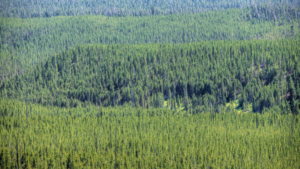
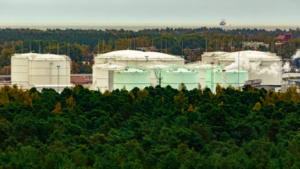
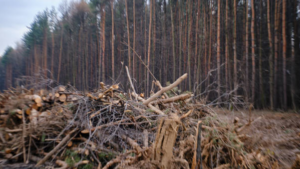


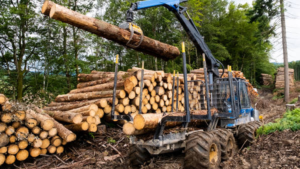
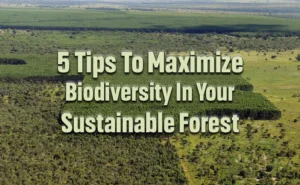

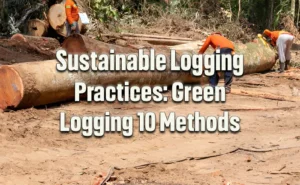
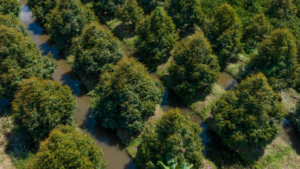
Leave your comment